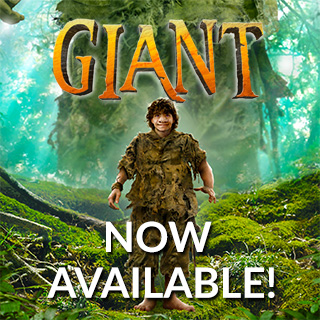Saving the Environment is Saving Ourselves: An Interview with T. A. Barron
Earthjustice Magazine
August 2011
PDF
1. Tell me about your connection to nature. What is your environmental ethos?
Nature is my great friend, wise teacher, and true healer. As well as my enduring inspiration.
How did all that happen? The best way to explain is to start with my childhood. I was lucky enough to grow up in two places close to nature—New England and Colorado—and could always explore a mountain stream, climb a tree, pick an apple, or just cover myself with mud. The nearness of nature shaped me profoundly. Not just in the adventurous ways you might expect—in deeper, spiritual ways, as well.
For example, I remember a snowy day when I was very young. My mother—an independent soul who was a geologist as well as a pantheist—dressed me in one of those big puffy snowsuits that made me look like a waddling balloon and took me outside. The snow drifts towered over me. Then she patted the top of a huge snowdrift and said, “Believe it or not, there are flowers under there. You won’t see them until springtime, but it’s true.” I was astounded. Flowers? Under there? She was telling me about the patterns of the seasons, of course—but also about something more. Something like … hope. Transformation. Renewal.
Then there was another day, when my brother and I found a slab of petrified wood, over fifty million years old, on the hill behind our Colorado ranch house. Fifty million years, I thought—why, that was even older than my dad! That was my first glimpse of geologic time—and a whole new perspective on human life and mortality.
And another day, when I was about twelve, I was walking through a meadow on the ranch. Suddenly I saw some geese flying overhead. They were so close I could hear their wings whooshing as they flew. Some of them, I realized, had started their journey way up in the Arctic, in Alaska, and had flown over western Canada and the Rocky Mountains, all the way to our little meadow. It struck me that their flight tied together some of the most beautiful places on this continent—that, by the very beating of their wings, they connected all those amazing places. And that they actually also connected me to those very same places.
So, how did these experiences shape me? Well, early on I realized that unspoiled nature is the best place to feel both very small and very large at once. Humbled as well as inspired. In nature, we can be dwarfed by the grand sweep of the stars or oceans or mountains, and yet still be part of it all—connected to the changing seasons, the tracks of a fox, or the flight of geese. In nature, we can know that we are a very small part of the universe—but that we are, nonetheless, still part of the grandeur, the pattern, the mystery.
I also discovered something startling—something truly radical in today’s hyper-connected, materialistic, noisy world: In wild places, we can still experience silence. We can hear voices apart from our own, sounds not made by automobiles or chainsaws or electronic media. We can even hear, sometimes, the ongoing whispers of creation—that remarkable process whose essence is life, and whose engine is silent.
And so, in time, I learned that nature can be a wonderful friend. A brilliant teacher. A powerful healer. And a great inspiration.
2. What roles do nature and conservation play in your stories?
Nature is hugely important in all my books. In fact, I’d go so far as to say that I treat the natural world not merely as a setting, a backdrop for my stories—but as a full-blown character. For places are alive, just like you or me. They have moods, histories, and qualities that can be bizarre, humorous, tragic, mysterious, or inspiring. Part of my job as a writer is to make those places so real, so sensuous, so fully alive, that readers want to voyage there again and again.
On top of that, I always weave environmental themes into my books. I truly believe that saving the Earth is about saving our fellow creatures—as well as ourselves. Stories are a wonderful way to convey this idea, sometimes directly and sometimes through metaphors.
For example, my trilogy The Great Tree of Avalon is a voyage into an imaginary world that’s in the form of a tree. I hope it’s a great, exhilarating adventure for readers—but I also hope that in this journey to a magical world, they will ask crucial questions about how humanity can live sustainably on a different, equally magical world called Earth.
My books about the young wizard Merlin—twelve books in all, now translated into fifteen languages—are really an extended environmental parable. Merlin (much like the guy who wrote the books) learns all his greatest lessons from nature. His elemental magic comes from listening to the language of rivers and trees, flying as a hawk, and running with the deer. Here’s an excerpt (from The Fires of Merlin) when he becomes a stag:
Somehow, in a mysterious way, I was listening not just to sounds, but to the land itself. I could hear, not with my ears but with my bones, the tensing and flexing of the earth under my hooves, the changing flow of the wind, the secret connections among all the creatures who shared these meadows—whether they crawled, slithered, flew, or ran. Not only did I hear them; I celebrated them, for we were bound together as securely as a blade of grass is bound to the soil.
As other examples, I’d mention The Day the Stones Walked, my picture book for youngsters about what happened on Easter Island. Or Tree Girl, the story of a brave girl who found that the forest is full of spirits … and that she shares more with them than she ever imagined. Or The Ancient One, the tale of a young woman named Kate who tries to save a great redwood tree from loggers—and who discovers that this ancient tree holds the answer to a riddle about what really happened to a lost tribe of Native Americans who vanished centuries before. Helped by the tree, Kate travels back in time and learns a lot from those people. And she also learns from the tree itself, whose very breath is a revelation:
As she listened … she heard a rushing, coursing sound, like the surging of several rivers. She realized that it must be the sound of resins moving through the trunk and limbs of the tree. And, strangely, through her own self as well … Back and forth, in and out, always changing, always the same. This was the sound, Kate realized at last, of the tree itself breathing. The sound of life being exchanged for life, breath for breath.
That story, appropriately enough, was inspired by a long walk in the Muir Woods—right before a visit to the San Francisco office of Earthjustice.
Sometimes I take a break from fiction and try my hand at straight nature writing. These books, set in Colorado wilderness, are really just an excuse for a good hike. (Not that I need much excuse.) I’ve teamed up with an excellent nature photographer, John Fielder, to do books such as To Walk In Wilderness—which can never fully express the wonder and beauty and majesty of this environment, but which I hope convey at least a hint.
3. How does your career in literature intersect with your environmental activism?
They sustain each other. Nature and children are my greatest sources of inspiration, the wellsprings of all my ideas. I’ve learned more from my nature-loving kids than they’ll ever learn from me! At the same time, I view my writing as an opportunity to spin a few yarns that will, I hope, feel fun, adventurous, and evocative—while also posing some serious environmental questions for the reader to ponder. And to act upon.
By the way, some of my favorite stories are not fiction. My national award, given to public-spirited kids from every background who have done outstanding service work for people and the planet, is all about turning the spotlight on those young people. Why? So their stories—inspiring examples of how one person can make a positive difference—can be shared by others.
This prize, which I named after my mother, honors twenty-five young people every year. Curious to learn more about these remarkable winners of the Gloria Barron Prize for Young Heroes? Just go to the website, www.barronprize.org. You’ll meet several future Jane Goodalls, John Muirs, and Rachel Carsons. And their stories, I promise, will renew your hope for our troubled Mother Earth!
Finally, I should say that the best environmental parables don’t come from modern-day bards like me. They are ingrained in our deepest traditions, our oldest efforts to make sense of the world. For example, take the story of Noah’s Ark.
Noah’s tale is, to be sure, a story about the power of faith. But it’s also clearly about the importance of saving our fellow creatures. Ask yourself: If God made Noah go through all that trouble to save two of every kind of creature … how can we possibly do any less?
4. Why are you a supporter of environmental organizations?
Because environmental groups are great forces for good, healthy, sustainable life on our fragile planet! It’s that simple. Without the dedicated, savvy, hard-working folks at those groups—people who could be making lots more money doing something else, if that was all they cared about—we are lost. With them … we have a genuine chance to save our planet.
Our children.
Our fellow creatures.
And ourselves.
In sum, I support environmental organizations because I can’t quite give up on this home planet of ours. Yes, it is beleaguered and trashed and attacked on every level. That we know beyond doubt. But it is also full of enduring wonder, beauty, and mystery—a place that nourishes us physically and spiritually every single day.
On top of that, the natural world holds enormous powers of resilience. Nature will survive, with or without us. What environmental groups provide, at the core, is a chance for us to survive as well.
And something more—a chance to rise to a higher level. To choose long-term wisdom over short-term greed. To be our best selves as stewards of the Earth.

